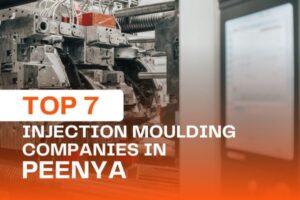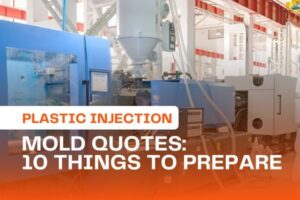Why is Injection Mold design Important ?
Introduction
Injection molding has revolutionized the manufacturing industry, enabling the mass production of complex plastic parts with high precision and consistency. Central to this process is the injection mold, the tool that shapes molten plastic into the desired form. The importance of a correctly designed mold cannot be overstated, as the mold’s design significantly impacts the quality of the final product, the efficiency of the production process, and overall cost-effectiveness.
Why Correct Mold Design Matters ?
- Quality Control: A well-designed mold ensures that the final product meets the required specifications consistently. If the mold design is flawed, it can lead to quality issues like dimensional inaccuracies, warping, and surface defects, leading to higher rejection rates and increased production costs.
- Process Efficiency: A correctly designed mold ensures optimal cycle times and process efficiency. A poorly designed mold may not fill or cool properly, leading to longer cycle times and reduced production efficiency
- Cost-Effectiveness: Investing in a well-designed mold can save costs in the long run. While a well-made mold may have higher upfront costs, it can reduce expenses associated with product defects, process inefficiencies, and maintenance, leading to lower overall production costs.
Consequence of Incorrect Mold
- Downtime and Delays: Suppose a faulty mold design leads to an additional 10 hours of downtime for maintenance and repairs. If the machine’s hourly operating cost is $100, this would result in an extra $1,000 in lost production time.
- Increased Scrap Rates: Let’s assume that a poorly designed mold results in a 5% increase in the scrap rate for a production run of 100,000 parts. If each part costs $0.50 to produce, this would equate to an additional $2,500 in material costs alone.
- Reduction in Product Quality: If the product quality issues resulting from an incorrect mold design cause a 2% decrease in sales, a company with annual revenue of $1,000,000 would experience a $20,000 loss.
- Increased Energy Usage: Assuming that an inefficient mold design increases the cycle time by 10% and the injection molding machine consumes 10 kW of power, operating for 5,000 hours per year at an energy cost of $0.10 per kWh, the additional energy cost would be $5,000 per year.
These examples demonstrate how the financial impact of incorrect mold design can quickly add up, leading to potentially significant losses for a company. It’s important to note that these figures are hypothetical and may not be representative of every situation. However, they serve to illustrate the importance of investing in proper mold design to minimize potential financial risks.
Common Issues in Incorrect Injection Mold Design
- Insufficient Draft: If the draft (the taper on the sides of the mold) is insufficient, parts may stick in the mold, causing ejection problems and potentially damaging both the part and the mold.
- Inadequate Venting: Without proper venting, trapped air or gases can cause short shots or burn marks on the part.
- Poor Cooling Design: If the cooling channels are not correctly designed, it can lead to uneven cooling, causing part deformation, warping, or sink marks.
- Incorrect Runner and Gate Design: The runner and gate system must be designed to ensure balanced and efficient filling of the mold. Incorrect design can lead to short shots, weld lines, or overpacking.
Conclusion
Injection molds are the cornerstone of the injection molding process, and their design plays a critical role in ensuring part quality, process efficiency, and cost-effectiveness. An incorrect mold design can lead to a range of problems, from part defects and reduced efficiency to increased costs. Therefore, investing time and resources in proper mold design is not just beneficial—it’s essential. Understanding common mold design issues and their consequences can help manufacturers avoid costly mistakes and maximize the benefits of the injection molding process.




